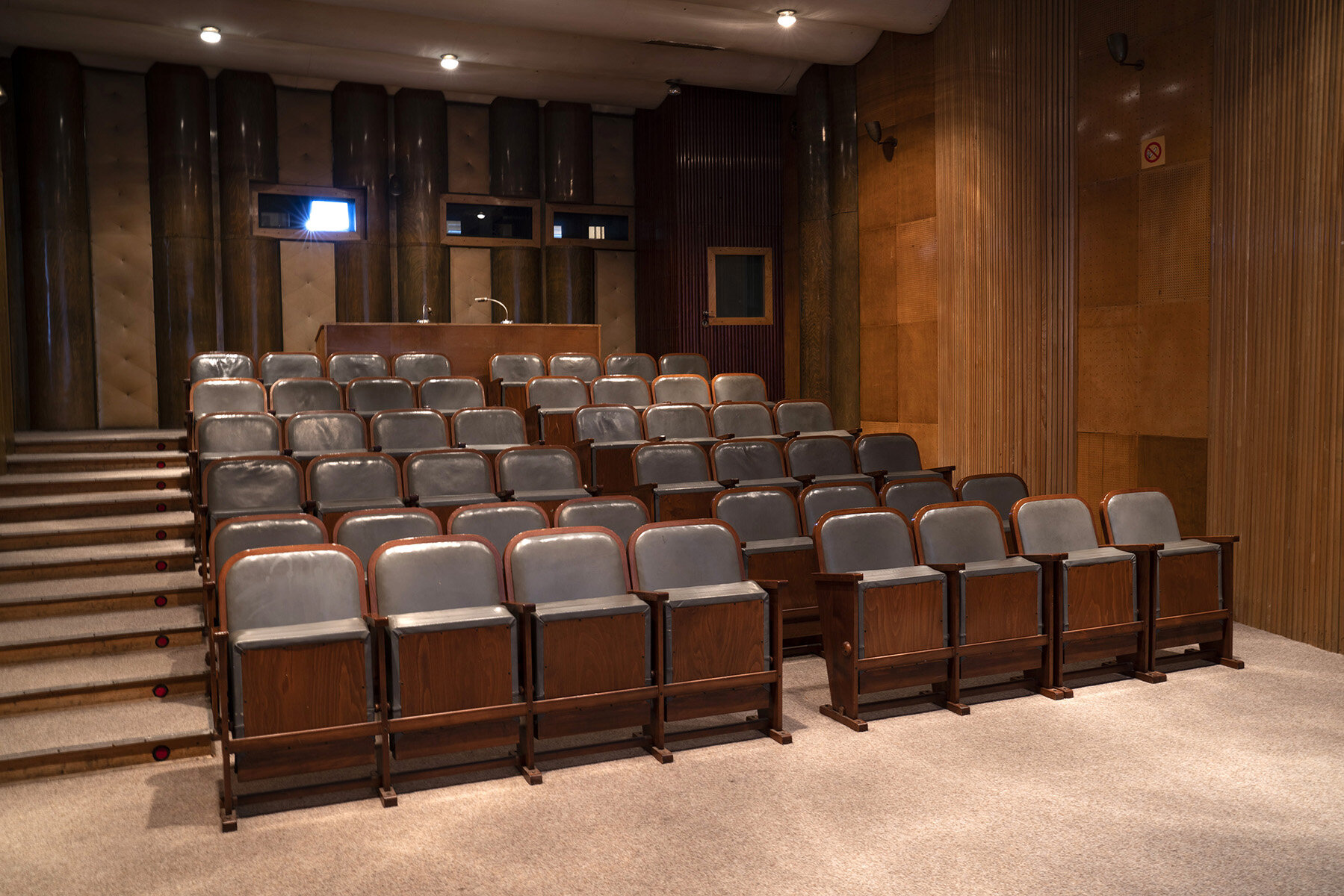Sites of Memory
Sites of Memory series extends personal reflection on important architectural sites of the post WWII Yugoslavia. Personal history is set against the backdrop of collective memory. One of these sites is a now defunct Avala Film Studios in Belgrade, which served the ex-Yu cinema industry for decades. The images of theatrically staged cinematic props carry an appeal of glossy, well-lit stages. Language of cinematic lighting in the photographs’ titles refers to the nature of cinema to create a system of belief. Archival images in the series are subjected to a sequence of interventions such as digital scanning and hand stitching of images printed on fabric. Passage of time is obscured both by the strategies of representation and the material itself. Archives accumulate as do memories. Critically engaging them through transformations offers a second look to the past.
“Pavlović’s various transformations of her materials within “Sites of Memory” not only complicate our notions of the “original” art object, but in their embrace of both handmade and digitalized strategies, mark the artist herself within the accumulations of the archive in an overt and critical way. Thus, it is the archive itself that forms the crux of Pavlović’s focus—an institutional apparatus that shapes, creates, and embroiders upon the monumentalization and memorialization of a particular past. By interrupting, reconstructing, and ultimately revising an extant archive with her own creative processes and existing work, Pavlović inscribed her work within the rich territory of contemporary archival praxis, but invited a subversive deconstruction of the historicizing methodologies brought to bear in the processes of collecting, finding, and recontextualizing materials. Incorporating the processes of archival work into her own oeuvre, Pavlović points to the staging of history as a political and personal act, for as we know, archives are not random organizing institutional receptacles of history, but inherently political and ideological entities authored and edited from a particular perspective and representational intent.” Jordan Amirkhani (Stagecraft)














